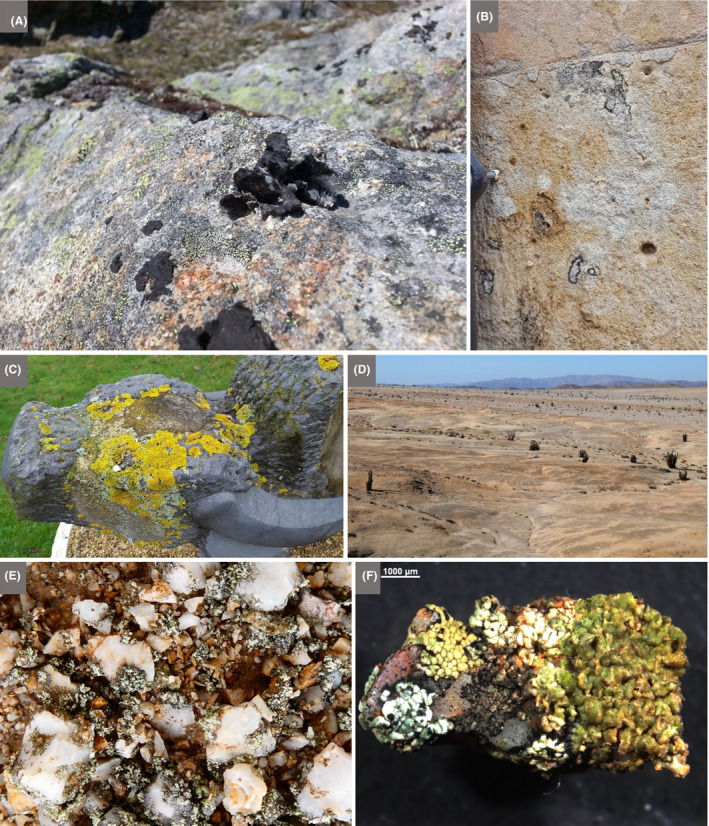Fig. 9.

Living skins on rocks
A. Diverse lichens, including black foliose forms, on a rock in western Greenland.
B. Lichens and fungi, including black ring forms on a sandstone building, which together with microbial communities, contribute to the biodeterioration of Villamayor Sandstone, the main building stone of the UNESCO World Heritage city of Salamanca. The field of view is ~ 20 x 20 cm.
C. Lichens on a stone cow, Milton Keynes, UK.
D. The seemingly barren landscape of the National Park, Pan de Azùcar, of the coastal Atacama Desert is covered by tiny, white stones that have a diameter of ~ 6 mm (termed grit). The black patterns are caused by lichens, cyanobacteria, green algae and fungi that colonize the surface and inner structures of the polycrystalline grits. These organisms also concatenate the single grits forming biological soil crusts (termed grit crust; Jung et al., 2020).
E. Close‐up of the grit crust after a fog event. Mainly lichens in their wetted stage are visible growing attached to grit stones.
F. Single grit stone covered by various lichens together with microfungi (mainly Lichenothelia). Many examples of microbes as part of the urban landscape can be viewed at ‘This is Microgeography’ website. Photographs A–C by Terry McGenity and D‐F by Patrick Jung.
